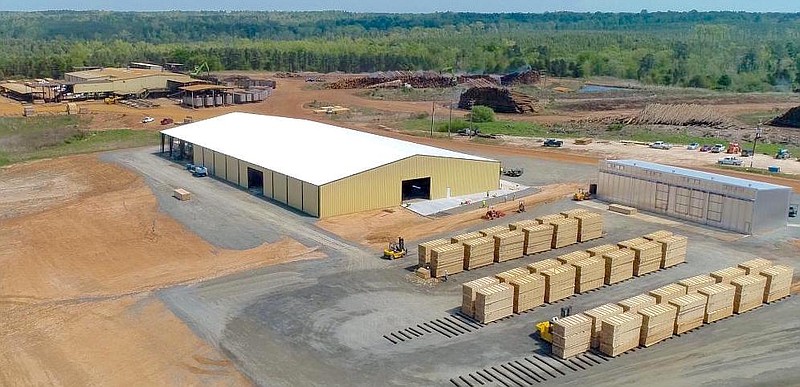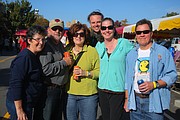LINDEN, Texas-Ward Timber Co. had to have some 60 hard hats last Wednesday. That's how many sawmill industry visitors were going to be looking around.
It was all courtesy of owners Bill Ward and John B. Jones. Their company was being visited by groups of the Hardwood Manufacturers Association and the Railway Tie Association.
The guests came in two buses and other cars, spent an hour or so each and were gone by noon, off to other sawmill or related operations.
The goal was to share ideas about cutting wood. For example, Bill Ward explained the crosstie.
"The RTA promotes the oak crosstie, which we cut. In the U.S., the oak crosstie is still preferred by railroads. Each mile of track has some 3,000 crossties, and with all the track miles in U.S., that's 18 million crossties per year."
Concrete and rubber occasionally are tried, but oak is still the best material, Ward said.
Ward said the site visit is a unique feature of the wood-cutting industry.
"The sawmill industry is pretty open about letting others come to a mill and look and see. That's what John and I had to do back in 1998 when we established our mill. We visited 10 to 15 sawmills and now have been on many such tours across the country."
What did the HMA and RTA come to see?
"We're pretty well known for having a low percentage of culled crossties when you deliver the hardwood to a receiver for treating. We're always rated highly. They wanted to see how we do things, and they were pretty interested in the way we handle crossties."
Ward Timber Co. was founded in 1978, and primarily purchased trees in the form of short wood (7 feet long cut) to sell to area paper mills. By the mid-1980s, the company transformed to tree-length logging. By the mid-1990s, WTC began sawmill and whole tree chipping operations.
Today, WTC, which has been in Linden since 1997, employs 120 people and has been in the hardwood sawmill business for 25 years.
The latest addition to the Linden mill includes two dry kilns, a 45,000-square-foot storage building and an automated lumber stacking and strapping system. The upgrades equip the company to cut and mill specialty pine products.
The tour groups primarily came to observe WTC's mill operations. For Ward, the visit was reminiscent of how he learned the wood-cutting business.
"I was just 10 years old when I knew what I wanted to do in life," he said, pausing to reflect. "My dad was in the business in Malvern, Arkansas, and as I grew up I knew I wanted to work in the outdoors and in logging.
"When I got out of high (school) and ready to go to work for him, he insisted I go to college. Well, I did and then I went back to work for him.
"About a year went by and one day in his office he got a call from the Domino paper mill. I'll never forget. They wanted my dad to come to East Texas to work at a little wood yard. No, he said, he was happy where he was.
"When he got off, I said, 'Dad, I'll go down there.' And in six weeks, I was in East Texas. Didn't know much at all. Thought I knew everything but didn't know anything, and had just gotten married."
Ward built his knowledge of the business by visiting other sawmills. That's why he enjoyed last week's tour: Some may have used the opportunity to learn.
WTC is a family business, Ward said. His daughters Brittanie Ward Lowery and Brooke Ward are employees, and along with his wife, Martha, make the large business seem small.
"I love having them in the company," Ward said.
Ward said the secret to the sawmill business is having good employees who understand the industry.
"My co-owner, John, too, has worked hard on the sawmill side with trade organizations to understand the market. Now he's passed it down to people who run our mill. We demand high standards in our production, and if everyone throughout understands that we produce a high-grade product, we will always have a market for it in good or bad times."



